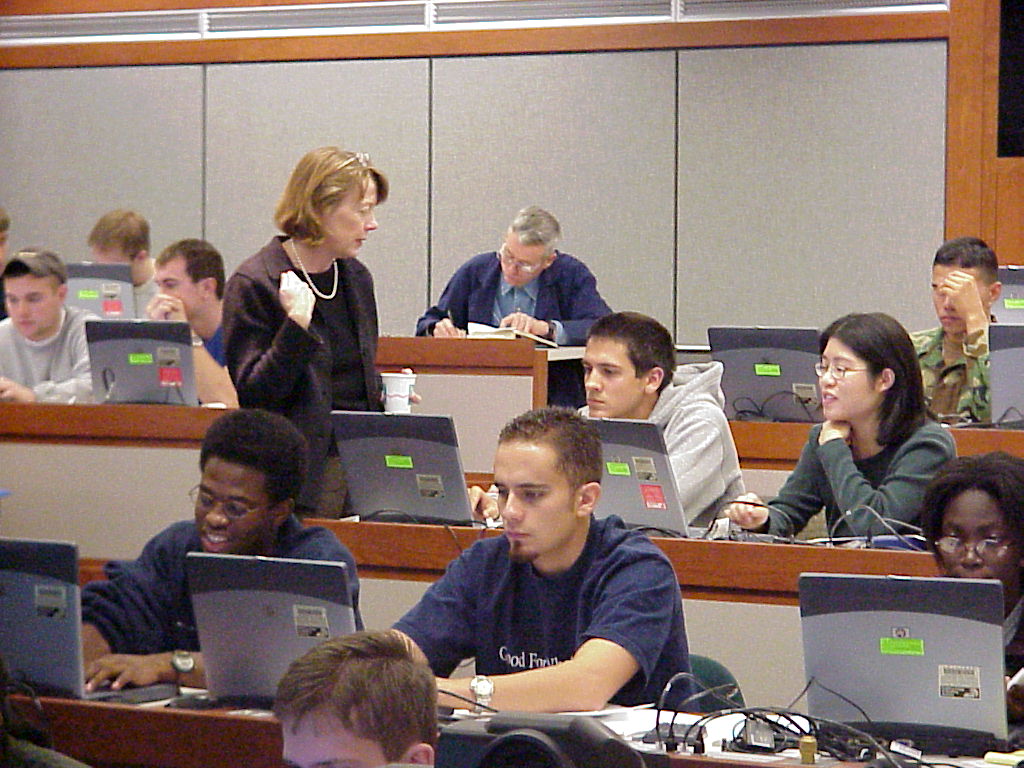Active Learning in Mechanical Engineering
|

The Mechanical Engineering I-Campus project seeks to bring technology-enabled teaching to two core undergraduate classes: 2.001 - Mechanics and Materials I and 2.005 - Thermal-Fluids Engineering I. This project is funded by Microsoft, the MIT School of Engineering, the MIT Department of Mechanical Engineering, and the Pappalardo faculty endowment.
For 2.001, we have created 12 desktop exploration experiments covering the entire spectrum of the course curriculum. The experiments are used in lecture in groups of three to four students to explore phenomena in mechanics before they are formally covered in lecture. This facilitates the concept of Scientific Discovery that provides the students with a deeper understanding of the material by giving them a practical "handle" on the subject.
A second aspect of the project is the new supplementary course website (http://icampus1.mit.edu) which contains web-based learning modules that are used both in lecture as well as at the students' own convenience. There are 9 modules covering the following topics: equilibrium, friction, axial force-deformation, truss structures, multi-axial stress and strain, linear thermo-elasticity, bending, torsion, and energy methods. Each of these modules is separated into 7 sections: online lecture, derivations, real-world examples, simulation, online quiz, reference, and a case study. The online lectures are being developed as Macromedia Flash animations narrated by the course instructor and cover the same material that is covered in class. The traditional lecture material will be enhanced by including digital images, movie clips and cartoon-like animations. The intention of these online lectures is to enable the students to revisit the material outside of class time. The derivations section covers the material in greater depth compared to the lecture. It essentially is an electronic textbook where the multimedia capabilities of the web are used to enhance the presentation of the material. The electronic nature of this "textbook" allows for frequent changes and updates, thereby keeping the material "alive".

The real-world examples are a series of photographs of examples that are based on mechanics. Students are challenged to turn these examples into simplified schematics and free body diagrams that can be analyzed with what is taught in the class. The examples also contain the schematics created by the instructors to which students can compare their results. The simulations are set up as investigative tools for students to explore a particular phenomenon. Students may input a variety of parameters and examine their impact, either numerically or graphically on the solution. Each simulation is also used to facilitate the use of mechanics in mechanical design. This will help students identify the effect of important variables on the solution. The online quiz is based on a database that contains a large number of conceptual and analytical problems. A number of these problems are continuously available to the students and the website gives instant feedback on the answers submitted. A smaller number of problems can be made available in class by the instructor for a real-time assessment on how well the students understand certain concepts. The reference section is intended for students taking classes or working on projects that require knowledge of 2.001 content. Here, a brief summary of the material is presented as well as additional material such as solutions to standard problems, material data, etc. The last section of each module consists of a case study, where a real-world problem pertaining to the material of the module is being analyzed from start to finish.
Presently, 4 out of the 9 modules are finished or near completion and are being used in teaching 2.001. Thanks to a generous donation by Hewlett-Packard, students taking the class in Fall 2001 have been given a laptop to use for the term to explore the use of mobile computing in and outside the classroom in accessing the IT enhanced portion of the curriculum. The laptops will be passed on to Spring 2002 students at which point more modules will be completed; however, a small number of laptops will be allocated to current students for use in the sophomore design course 2.007. This will enable us to explore the effectiveness of the IT enhanced portion of the curriculum and to verify whether it acts as a bridge or integration vehicle across the mechanical engineering undergraduate curriculum.
In 2.005 we have concentrated on developing a module that concentrates on conductive and convective heat transfer. The module includes eleven thermal simulations that the students can use to develop intuition on how temperature distributions in solids and liquids evolve in time. In addition, "calculators" have been developed to allow the students to quickly calculate the values of Bessel and error functions that they might need for problem sets. The simulations have been used in 2.005 lectures and recitations. A reference website has been generated with conductive and convective heat transfer information that is useful for the student.
A set of worked problems that use both the simulation programs and standard "paper" methods has been implemented on the website. Macromedia Flash templates have been written for the easy generation of interactive learning modules. These templates are now being used to generate modules that link "engineering" problems in thermal fluid systems to real world situations.